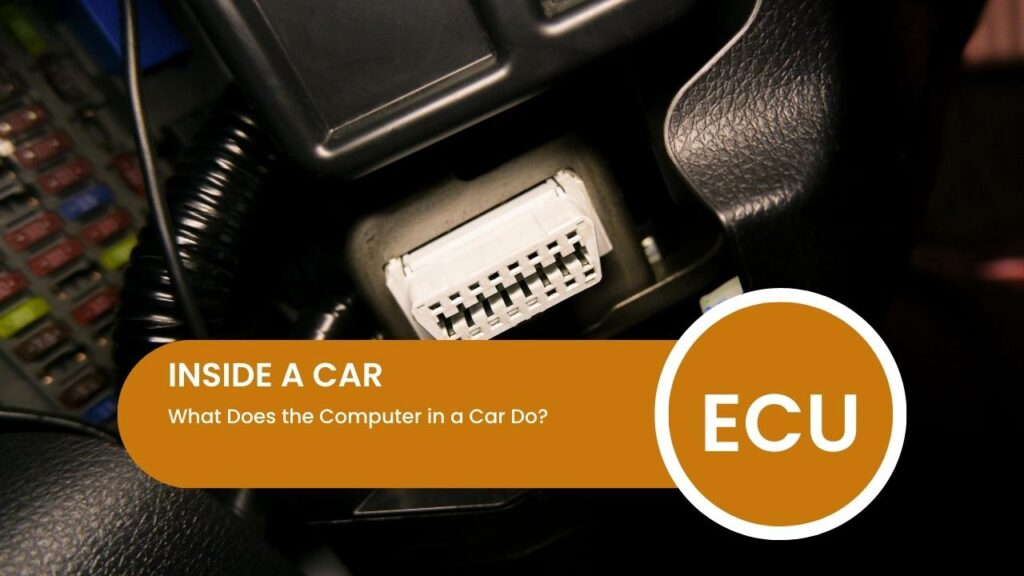Let’s be honest, we’ve all bragged about our phones or laptops being the smartest tech we own, right? But how often have we given credit to our trusty four-wheeler? If you’re just as surprised as I was when I found out, brace yourself for this: your car is no less than a tech superstar! It’s not just an engine, wheels, and some seats. Oh no, it’s got a computer. And not just any computer, a highly sophisticated one.

It might be a little hard to digest this, considering how we’ve always viewed cars: as machines that just get us from point A to B. But believe me, there’s much more to our humble rides. They have become an extension of our digital lives, mirroring the technological advances we see in our smartphones and computers.
Table of Contents
The Magic Box: The Onboard Computer
Ever wondered how your car knows when to trigger an airbag, manage the anti-lock braking system, or adjust the air conditioning for maximum comfort? Well, thank the Controller Area Network (CAN).
Numerous operations in today’s cars are overseen by a system known as the Controller Area Network (CAN). This system includes various mini computers, often referred to as Electronic Control Units (ECUs).
CAN is a standard designed to allow microcontrollers and devices to communicate with each other within a vehicle without needing a host computer. It’s essentially a communication network that connects different electronic systems within the car, like the engine management system, airbags, and the anti-lock braking system, to name a few. This network allows them to share data and work together, making your car function as one cohesive unit.
The ECU is like the brain of your car. Just like our brain communicates with different parts of our body, the ECU communicates with various systems within your car.
The ECU collects data from numerous sensors around your vehicle and uses this information to adjust the functioning of the engine and other key systems, optimizing performance, emissions, and fuel economy. This helps keep your car running smoothly and efficiently.
- Transmission Controller: This is an integral part of automatic cars. Its job is to gather information from various sensors about driving conditions and vehicle performance, and then it uses this data to decide when and how the car should shift gears. This helps your car run more efficiently, saving you on fuel costs. In short, it’s what helps your car go smoothly from a standstill to a full-speed cruise.
- Airbag Systems: Think of airbags as your in-car bodyguard during an accident. They’re managed by their own unique computers that are always scanning data from devices such as gyroscopes and accelerometers. When they detect an abrupt change in movement, the computer evaluates the intensity of the collision and chooses the appropriate airbags to set off, ensuring your utmost safety.
- Onboard Cameras: These cameras are usually located on the car’s dashboard and record what’s happening inside and outside the car. The footage gets stored in the cloud, letting you review it later. More advanced cameras can even spot if you’re not paying full attention to the road or if you’re driving in a risky way. If you’ve recorded an incident that needs reporting, you can hand the footage over to the police.
- Motorized Seats and Mirrors: The beauty of these is they’re powered by electric motors, giving you the freedom to tweak their positions using switches or a joystick. It’s all about getting the most optimal road view and eradicating any blind spots, and the best part? No need for any physical exertion or awkward movements.
- Sound System: Many of the latest car models may not come equipped with a traditional radio or CD player as part of their default settings. However, you have the choice to include them, or they might already be part of the car’s all-in-one entertainment center. And if radio waves aren’t your thing, go for a Bluetooth-enabled CD player. It offers the convenience of linking your smartphone without wires, letting you enjoy your personal music collection during your drives.
Advanced Driver-Assistance Systems (ADAS)
If you’re a car enthusiast, you’ve probably heard of ADAS. For those who haven’t, let me introduce you to this fantastic tech advancement that’s making our drives safer and comfier. Advanced Driver-Assistance Systems or ADAS is a technology that uses the computer system of the car to increase car and road safety.
ADAS includes features like adaptive cruise control, lane departure warning, automatic parking, and even collision avoidance systems. These are designed to automate, adapt, and enhance vehicle systems for safety and better driving. And guess what? They all rely on the onboard computer in your car.
Next Time You’re in Your Car, Thank the Computer!
So, the next time you’re cruising in your car, listening to your favorite tunes, and feeling the perfect blast of cold air from the AC, remember there’s a computer working tirelessly to keep your ride safe and comfy. It’s taking care of a hundred different things so you can enjoy your drive.





